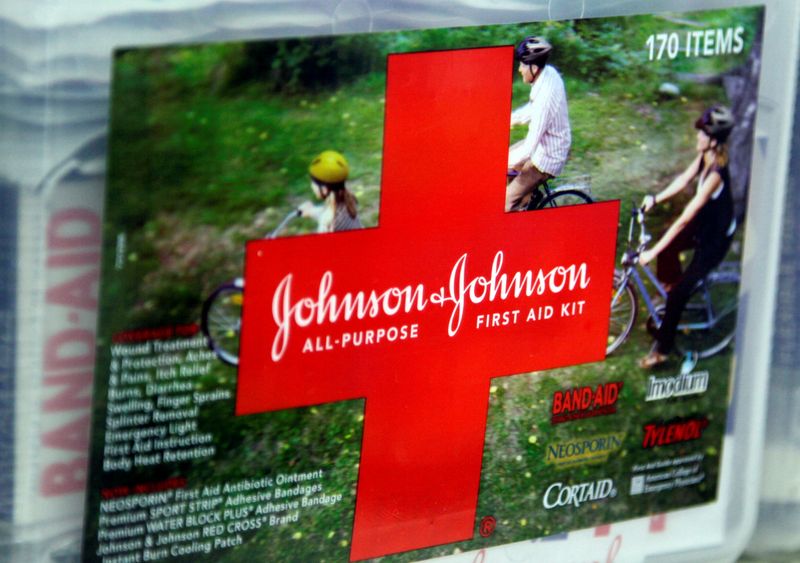How Johnson & Johnson became the sprawling healthcare giant it is

© Reuters. FILE PHOTO: A first aid kit made by Johnson & Johnson for sale on a store shelf in Westminster, Colorado April 14, 2009. REUTERS/Rick Wilking
By Carl O’Donnell
(Reuters) – Johnson & Johnson (NYSE:) plans to spin off its consumer health division that sells Listerine and Baby Powder to focus on pharmaceuticals and medical devices in the biggest shake-up in the U.S. company’s 135-year history.
Here is how J&J got to where it is today.
1886
Robert Wood Johnson partners with brothers James Wood Johnson and Edward Mead Johnson to found Johnson & Johnson in 1886. It originally focused on ready-to-use sterile surgical dressings.
1894
J&J begins producing Johnson’s Baby Powder.
1918
In response to a global flu pandemic, J&J begins selling a mask designed to limit the spread of the airborne viral illness.
1920
J&J invents Band-Aid and begins marketing it in 1921.
1944
J&J completes its initial public offering and becomes a publicly traded company. It had annual sales of around $95 million at the time, compared to more than $80 billion in 2020.
1959
J&J acquires Tylenol maker McNeil Laboratories.
1961
J&J acquires Janssen Pharmaceuticals, which now makes ADHD drug Concerta and J&J’s COVID-19 vaccine.
1997
The first lawsuit alleging that J&J’s Baby Powder contains cancer-causing asbestos is filed against J&J. Since then, J&J has faced thousands of lawsuits and billions of liabilities and has ceased distributing Baby Powder in the United States and Canada.
1999
J&J acquires Centocor Biotech Inc, maker of Remicade for Crohn’s disease, and renames it Janssen Biotech.
2012
Johnson and Johnson acquires orthopedic device maker Synthes for nearly $20 billion to expand its medical product offerings.
2017
J&J acquires Actelion for $30 billion, adding heart disease medicines such as Tracleer to its portfolio.
2020
J&J begins developing a COVID-19 vaccine. It received authorization to begin administering its COVID-19 shot the following year.
Sources:
https://www.jnj.com
https://www.asbestos.com/companies/johnson-johnson
https://www.reuters.com/investigates/special-report/johnsonandjohnson-cancer
Fusion Media or anyone involved with Fusion Media will not accept any liability for loss or damage as a result of reliance on the information including data, quotes, charts and buy/sell signals contained within this website. Please be fully informed regarding the risks and costs associated with trading the financial…
Read More: How Johnson & Johnson became the sprawling healthcare giant it is
